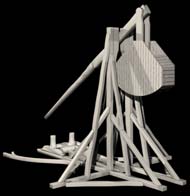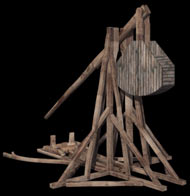|
The film's
3D sets are first created by the designers in association with the director.
The major sets go through many iterations that have been known to take
as much as 12 months before a precise and detailed final design is deemed
satisfactory. Computer artists with a good knowledge of architecture
then translate these huge buildings in 3D objects. A rough rendering
is first put together, allowing the director to walk through the scene
as if he were on a live set and enabling him to choose the most interesting
camera angles and motions. The meticulous reconstruction in 3D of all
architectural elements then proceeds.
CGI also
provides the filmmaker with terrains and skies impossible (or simply
inconvenient) to film in real life. The director can have exactly what
he needs without spending days scouting for locations and having to
shoot in the four corners of the world. Particle animation then enables
the introduction of elements as varied as atmospheric effects, crowd
scenes, explosions, …
Indeed,
as the story unfolds, many elements are digitally built then destroyed:
ballista, catapults, siege towers, or even furniture, hangings, drapes,
etc. And the careful attention given to animation and texture work increases
the realism when actors interact with these elements.
Several
sequences shot with a restricted number of extras who are then digitally
multiplied allow scenes to reach epic proportions. The film Aldeus also
requires the presence of Nightmares, creatures who do not all have a
human shape. CGI and motion capture are used when their design and motions
cannot be done effectively in animatronics (puppets animated with tiny
motors).
Many scenes
are shot inside studios, with actors in front of a bluescreen. The actors
and the foreground are then separated from the blue background (which
is eliminated) before being composited with the set, the sky, the atmospheric
effects in a single image. To finalise the shot, lights and colours
are reworked to integrate these multiple sources into a uniform picture.
Images:
Stages of 3D creation for a catapult: wireframe, without texture, with
basic texture. The catapult will later be accessorised (ropes, metal
elements, bag, stones,) lit, animated, and composited in a scene.
|


 |




